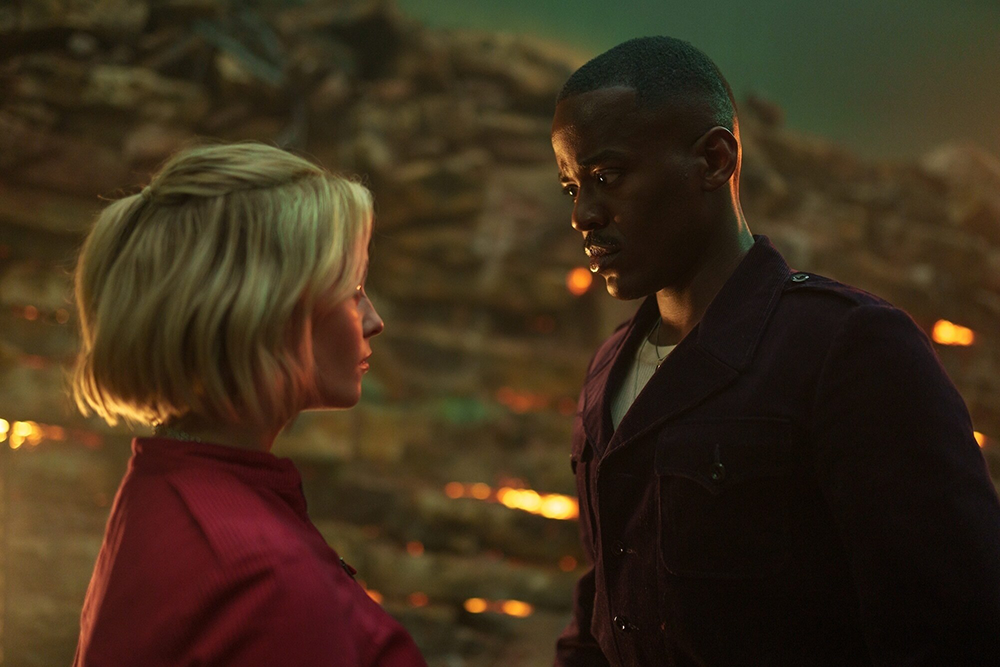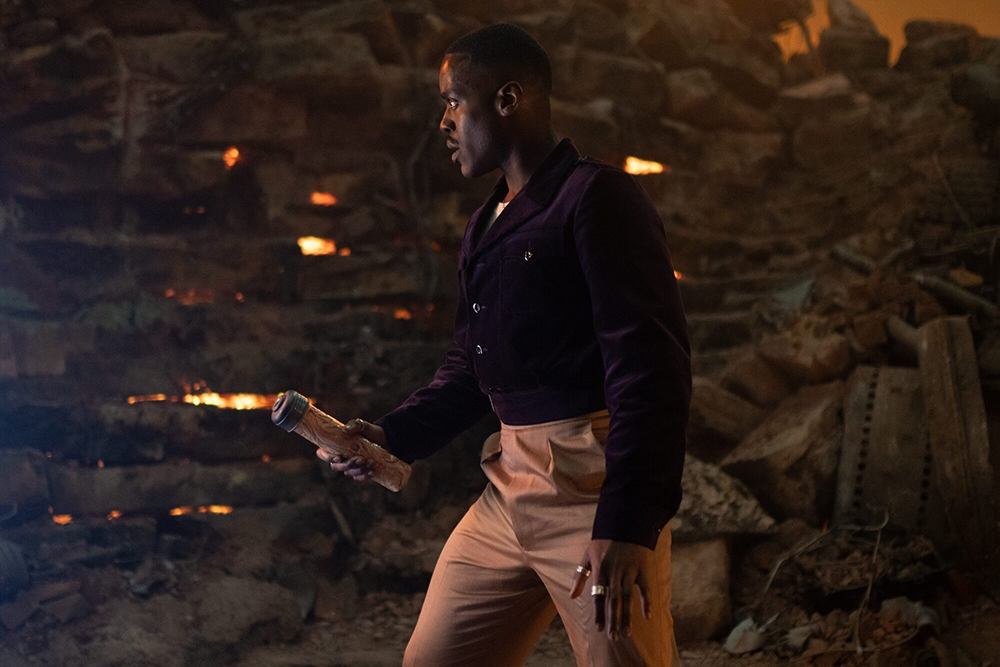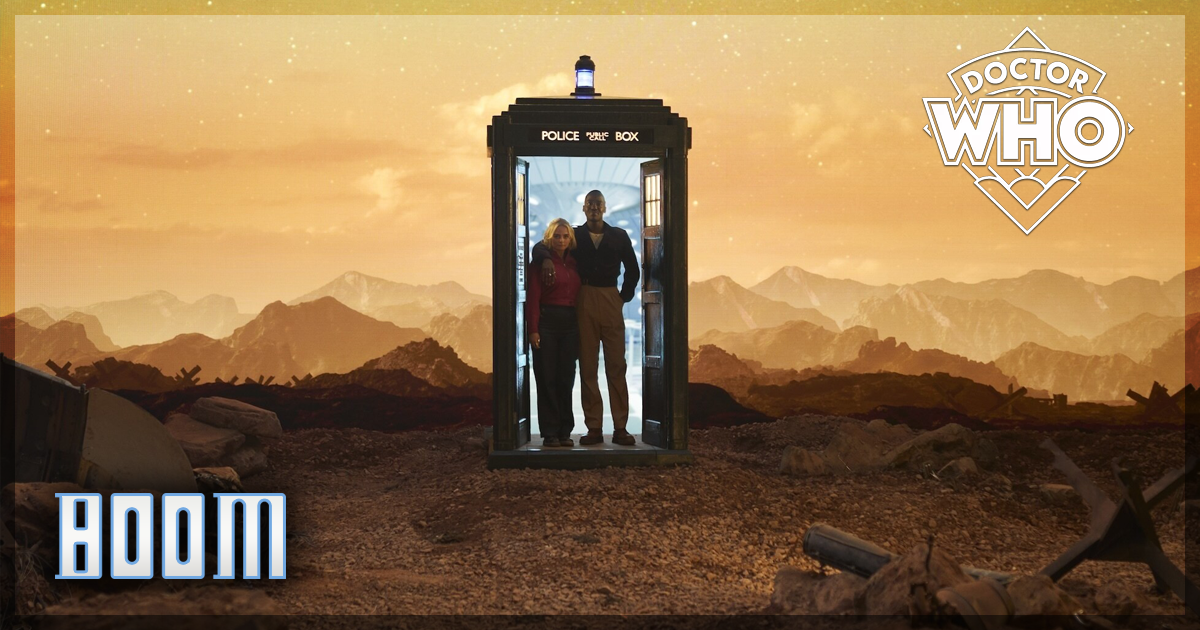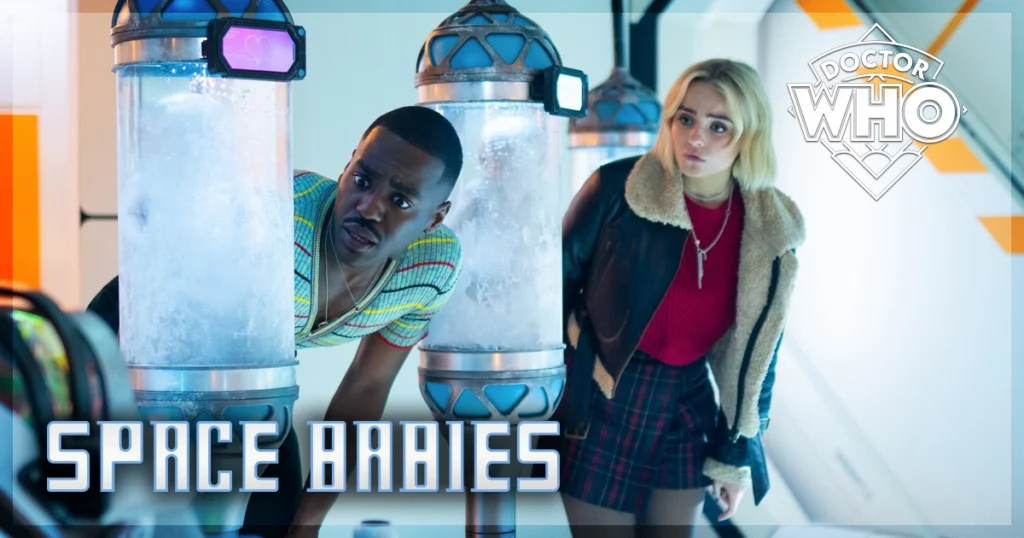Former Doctor Who showrunner Steven Moffat returns to the show after seven years away with Boom, an episode that feels like a compendium of his best and worst traits. His former episodes include firm fan favorites The Girl in the Fireplace and Blink, both high-concept stories that include deep emotional stakes to those involved. His time as showrunner from 2010 to 2017 was sadly marred by terrible, convoluted plotting, an insistence on returning to ruin his previously written characters, such as The Weeping Angels, and a smarminess in the writing that prevented emotional attachment.
The show during his tenure had bright spots – the masterful Vincent and the Doctor occurred during this time – but there was a distinct issue with his overarching writing that it was a relief when he stepped down. Boom has a Moffat-sized hole in it, as it resides bang in the middle of Moffat’s sensibilities as a writer. It is a high-concept, emotionally charged episode with sharp dialogue. There is an attempt within Boom to capture tension similarly to Moffat’s previous stories, but that tension is far too hollow for how dependent the episode is on it.
[There are spoilers ahead for Doctor Who: Boom.]
The story of Doctor Who: Boom
The episode begins with two Anglican marines limping across a battlefield, the dusty planet of Kastarion 3, in a state of war. Robotic ambulances (with Susan Twist appearing, in another cameo, on their interface as a killer nurse) are scattered around the battlefield, lying docile until they sense combat. But these aren’t ambulances as we know them, as they come with the instruction to kill if wounds are too severe. This is the typical styling of Steven Moffat, who often transforms everyday objects and sayings into the macabre, such as when he turned stone statues into quantum-locked, teeth-bearing monsters. In Boom it is the term “sharp scratch” as the ambulance analyses the wounded person before deciding they should be “humanely terminated”.

After one of the men is vaporized by a landmine, the other, named John Francis Vater (Joe Anderson), finds themselves victim to the ambulance for being temporarily blind, but not before sending his final words, “Kiss, kiss,” to his daughter, Splice, (Caoilinn Springall). The Doctor (Nctui Gatwa) becomes involved soon after this opening gambit, rushing towards the death scream of Vater. In doing so, he steps on a mine made by the Villengard company and is forced to remain static, one foot lodged in the air, the other on this mine. But the mine does not go off straight away because The Doctor has stopped moving, and the mine is instead monitoring his vital signs.
Where Doctor Who: Boom’s tension unravels
This is the aspect of the episode where the entirety of the plot’s supposed tension comes completely undone. The Doctor mentions that his adrenaline is a factor in kick-starting the mine’s explosive countdown, and as the episode moves on, that adrenaline spikes and the green lights flicker towards transforming the Doctor’s DNA into the bomb itself. It is overwritten and completely empty as we see the episode break the very rules it states.
Ncuti Gatwa’s range on display
The Doctor must remain static, but Gatwa is not a static actor, and his expressive personality constantly begs the question of how this mine has not already gone off. It is the same flimsy plot mechanics that Moffat was derided for throughout his time as showrunner. What the episode does get to do, however, is finally give Ncuti Gatwa the chance to showcase his acting ability and range as The Doctor like he’s not had the opportunity to yet. If Gatwa has so far been an excited little kitten, skittering around having adventures, Boom transforms him into the snarling, aged lion that we often forget is hiding behind the disarming veneer of the Doctor’s personality.
The antagonist of Boom is the capitalistic Villengard algorithm, which is what causes the ambulance to decide that certain people are not fiscally worth saving. The conglomerate were first introduced back in The Doctor Dances as the manufacturer of Captain Jack’s sonic blaster and are littered in off-hand comments made across the show as the universe’s biggest supplier of weapons to both sides of military conflicts.

Doctor Who: Boom’s political themes
This is the second episode in the first three of the season that is pointedly against capitalism. Much like Space Babies tackled it alongside other topics of a political nature, Boom is tackling the triviality of war, artificial intelligence, and religious extremism. This is shown by the Doctor’s verbal attacks against the Anglican marines that rock up to claim the remains of Vater, especially in Gatwa’s snide remarks about giving ‘thoughts and prayers’ instead of taking on actual action to end the war.
One such marine is future companion Mundy Flynn (Varada Sethu) in her first appearance in the show. The Anglican marines turn up alongside Vater’s daughter, Splice, a young girl who has such faith in her God that she is unable to process her father’s death. Her incessant behaviors around being with her “daddy” is an irritation that doesn’t placate on episode rewatch.
Final thoughts on this episode of Doctor Who
There’s a lot to like about Boom. It is an episode that is tonally different within the scope of this series; the campiness of the previous episodes is markedly toned down in favor of drama. Mileage varies on if this is the kind of Doctor Who you want, while there must be a happy medium between the two that we are yet to see. Gibson and Gatwa continue to play well together, even if Ruby’s place in the story is too minimal, while Sethu makes enough of an impression that I’m excited to see her return.
There’s a sentimental streak between Vater and Splice that is undeniably endearing, while the relationship between Sethu and a fellow marine is trite at best. Outside of the green screen landscape, it’s an episode that has some of the series best ever visuals, the vacuum of space having never looked so lush, and while we once again return to the mystery of Ruby’s ability to manifest snow, this idea is starting to feel repetitive without further answers. It’s the episode in the series that has had the most dramatic, emotional heft while delivering some of the best dialogue of the season so far, but the narrative missteps mean this landed me with more of a whimper than a bang
Doctor Who is now streaming on Disney+.
You might also like…
Doctor Who: ‘The Devil’s Chord’ Review – Season 1 Episode 2
Doctor Who: ‘Space Babies’ Review – Season 1 Episode 1
Review: ‘Doctor Who: The Church on Ruby Road’ – Ncuti Gatwa helps usher in a sparkling new start



